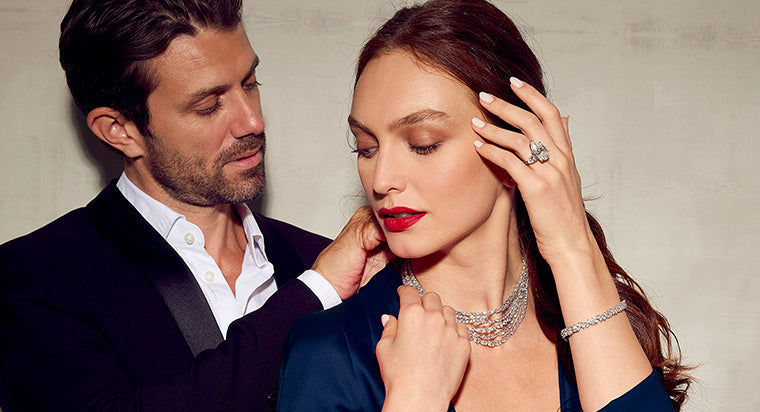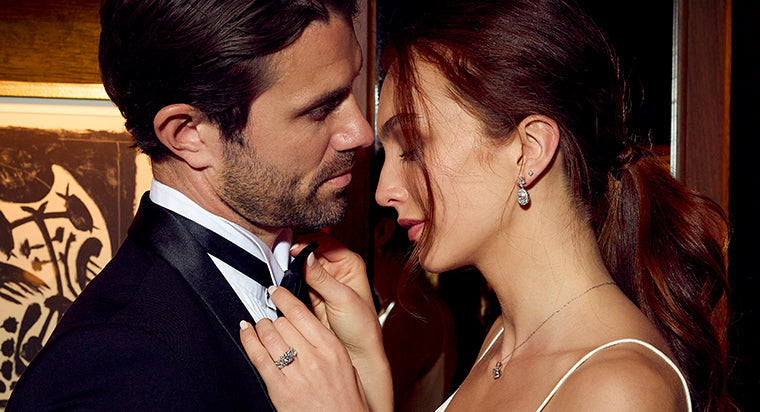Cartilage Piercing: Is It Right for You?

Adorning yourself with jewelry isn’t only about accessorizing–it’s also about self-expression. Similarly, the popularity of cartilage piercings have increased because they are eye-catching and allow you to showcase your unique sense of style.
Cartilage is the tough connective tissue that creates the upper portion of your ear and is a common spot for piercings. While some think cartilage piercings only refer to the ear, they’re actually a category of piercings. Most are done in the ear, but a nose piercing also is a cartilage piercing–it’s skin covering cartilage. Cartilage piercings are more painful than ear lobe piercings because cartilage tissue is thick and hard. It’s normal to experience some pain and discomfort.
There are 10 different kinds of cartilage piercings:
- Helix: It’s one of the more common cartilage piercings, and it’s placed on the upper ear and can be done as a stud or a ring.
- Forward Helix: This piercing is also on the upper ear, but placed in a more forward position above the tragus (the small bit of cartilage in front of the ear canal). Forward helix piercings are more challenging than typical helix piercings because they need to be lined up correctly on each ear. Every ear is different!
- Tragus: The tragus is the small flap of cartilage directly in front of the ear canal. This piercing is more uncommon, but has a unique look. It’s important to note that this piercing is trickier to perform. Each tragus piercing is unique because of the size and shape of the tragus.
- Industrial: Industrial piercings are also a more common cartilage piercing choice. Technically, it’s two piercings in one because a barbell connects a helix piercing and a forward helix piercing. It’s an edgier piercing choice, but definitely eye catching.
- Daith: This type of piercing goes through the small flap of cartilage directly above the ear canal that’s close to the middle of the ear. Some get this piercing for its rumored benefits of helping with migraines (though this has yet to be proven from a medical perspective). These piercings align with acupuncture points, so it puts constant pressure on that point and some have found migraine relief. Unlike other piercings, it’s suggested that a ring rather than a stud will help with its healing.
- Conch: This piercing’s name comes from the middle shell of the ear that looks like a conch seashell. There are two parts to the conch part of the ear, so you can actually pick either an inner conch or an outer conch piercing. Both are pierced through the middle “shell” of the ear, which is the thickest piece of cartilage on that part of the body. An inner conch piercing goes through the upper part of the middle shell, close to the ear canal. An outer conch goes through the lower part.
- Anti-Tragus: An anti-tragus piercing is located on the outer edge of the tragus. It’s above the earlobe rather than on the part closest to your head. The location of this piercing is unique to each person because it requires your anti-tragus be prominent enough for a piercing. If it's not, the piercer could decline to give the piercing because it’s trickier to pierce.
- Rook: Rook piercings are vertical piercings placed on the cartilage directly above the forward helix. It’s important to note that this is one of the more painful cartilage piercings.
- Snug: This piercing is a horizontal piercing that goes through the inner rim of the cartilage above the anti-tragus. It gets its name because it’s a small area that almost hugs the folds of the ears…like a snuggle. You’ll mostly see curved barbells or smaller hoops as jewelry in this piercing. It’s a tight area to pierce, and is one of the more painful locations.
- Orbital: The orbital is another less common choice of cartilage piercing, but gives a unique look. It gets its name because the piercing gives the illusion that it’s floating and orbiting the ear. The most popular placement is in the lobes and the helix piercing is second most popular. Like the industrial piercing, it connects two different piercings but features a ring rather than a barbell.
TABLE OF CONTENTS
Taking Care of Your Cartilage Piercing
After carefully choosing your cartilage piercing and getting it done, it’s important to take care of it. Cartilage piercings take longer than other piercings to heal – generally four to six months. While it heals, you’ll need to carefully take care of the piercing every day. Your piercer will give you instructions, but you’ll typically clean your ears with sterile saline or gentle soap and water twice a day, and then apply an antibiotic ointment if instructed. Carefully cleaning the area prevents infection. Keep an eye on your piercing as well. If it’s swollen, red, hot to the touch, or has a green or yellow discharge, it could be infected.
Types of Cartilage Jewelry
In terms of jewelry for your cartilage piercing, you want the pieces to be simple so they don’t get caught, pulled, or ripped out. You’ll also want to select a high-quality, hypoallergenic metal to be safe.
Focus on the metal, try to opt for a hypoallergenic metal to be safe
Shorter designs are advisable until the piercing is fully healed. Post that you can opt for more elaborate pieces.
As with any piercing, it’s important to take excellent care of it as it heals. Hopefully this article gave you some insight into all the different types of cartilage piercings. They’re eye-catching, unique and you can snag some amazing jewelry to dress your piercings up or down.
FAQs
What kind of jewelry should I wear on a cartilage piercing?
How long does it take for a cartilage piercing to heal?
Is it ok to wear hoops on a cartilage piercing?









